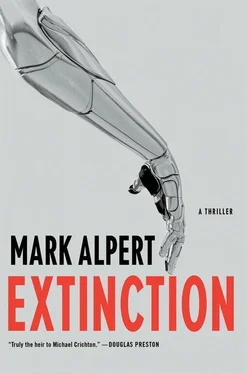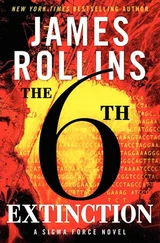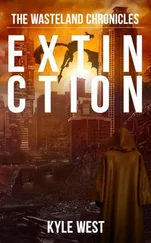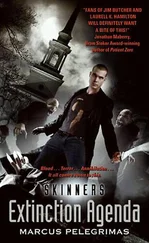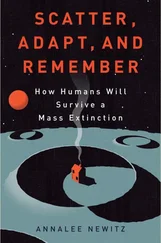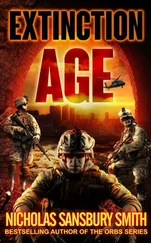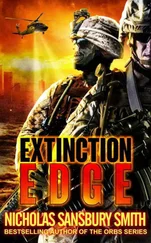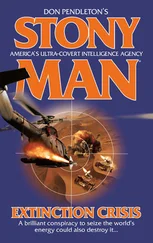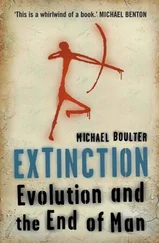“Watch it! You got incoming!” the pilot shouted over the radio. “They’re—”
Then she heard the explosion.
The closest thing he could compare it to was one of those 360-degree planetarium theaters where the movie is projected on the underside of the dome and the images glide all around you. Except in this case, Jim was acting in the movie at the same time that he watched it.
The first image he saw was the rocky slope of Yulong Xueshan. He was running up the mountain again, his lungs on fire, trying to reach the edge of the glacier. Then the strange movie skipped ahead and he saw himself slamming his prosthetic hand against the ice. Then it skipped ahead again and he was typing a password on the computer terminal at the radio tower. These were his most recent memories, full of detail and color, but they rushed past in a jerky, erratic stream he couldn’t control. Without any warning the movie leaped backward in time and he was in the Underground City, riding on the back of Kirsten’s scooter. And as he watched himself reenact the scene, he got the feeling he wasn’t alone in this theater. Supreme Harmony was with him. It was running the projector.
The movie in his mind jumped back and forth, rewinding and fast-forwarding through the events of the past few days. Jim drove the three-wheeled truck, scaled the Great Wall, swatted at drones with his prosthesis, and turned on his satellite phone. This last image gave him a jolt. Supreme Harmony was homing in on the information it wanted. It was rifling through his memories to find the encryption key that would decipher Arvin Conway’s file. Hundreds of images flashed in quick succession, and then the movie froze on one in particular, a view of the sat phone screen that revealed a list of files stored on the device. At the top of the list was CIRCUIT, Arvin’s diagram showing the location of the Trojan horse.
Jim’s alarm was so strong, it disrupted the image. The sat phone’s screen flickered for a moment as if hit by an electrical surge. All at once Jim realized he wasn’t powerless. His emotions could alter his memories. With enough effort, maybe he could take control of the projector. Focusing his will on the list of files, he imagined a mighty hand grasping the image and thrusting it deep underground. Then he replaced it with another memory, the picture of Medusa. He was hoping that Supreme Harmony would retrieve the image and convert it to the shutdown code, but unfortunately his recollection of it was fuzzy. Medusa appeared in bits and pieces: first her mouth, then her eyes, and then one of the snakes sliding across her brow.
Before the picture could fully materialize, he felt a bolt of pain. Everything went black and he tumbled through the darkness. He couldn’t see a thing. The projector had stopped and the theater was silent, but Jim sensed that Supreme Harmony was still there. The network was all around him. It knew what he’d tried to do, and now it was angry.
After a while, the darkness lifted, but the pain stayed with him. He saw a whirlwind of images scattering in all directions. His recent memories of China and Afghanistan hurtled out of sight, and older scenes rushed into view: He was in the workshop at his home in Virginia, he was eating dinner alone in front of his computer, he was drinking a shot of Jack Daniel’s while staring at the telephone. Supreme Harmony was rummaging through his brain, tossing everything aside in its search for the encryption key. Although Jim could bury this secret, he couldn’t delete it, and the pain got worse as the network dug deeper.
The movie took a huge leap backward, and he saw himself as a six-year-old running away from his father, who strode across their living room with a leather belt in his hand. Then he was a plebe at West Point, marching across the parade grounds. He ran obstacle courses, slithered through the mud, slept on his feet, dangled from a parachute. Then he was in the 75th Regiment, and his dread steadily increased as he relived his army years. He was at Fort Benning, then Panama, then the deserts of Kuwait. Then he was in Somalia, and the pain became unbearable. He was pinned down behind the charred wreckage of a helicopter that lay on a street in Mogadishu. Hundreds of Somali militiamen were converging on his position, and their rocket-propelled grenades whistled through the air. One of his men was already dead and another was dying. And all the while Jim felt Supreme Harmony beside him, probing his every thought. Beneath the screams and explosions and gunfire, he heard the network’s persistent voice: Where have you hidden it? Is it here? Is it here?
The theater went dark again. Jim was writhing in agony, but he refused to give up. He pushed his secret even deeper into the darkness. They won’t get it, he vowed. They’ll have to kill me first.
Then the pain eased. He wasn’t in Somalia anymore. He was in civilian clothes and standing in the middle of an office. It was an ordinary State Department office, just like a hundred others around the world—gray carpet, white walls, drab desks. On the wall was a framed photograph of President Clinton, and on each desk was an outdated, government-issue computer. But the office workers weren’t sitting at their desks. They crowded by the window, looking outside.
Jim opened his mouth, ready to shout an order, but then someone in the crowd turned around. It was a young girl, only seven or eight years old.
“Daddy?” she said.
It was Layla. Her adult voice came from the little girl’s mouth. She looked around the office, taking everything in. “I don’t remember this place,” she said. “Do you know where we are?”
Jim knew. Although the others were turned away from him, he recognized them from behind. The brunette in the army uniform was Captain Kirsten Chan, a twenty-eight-year-old intelligence officer assigned to Jim’s NSA team. And the blonde in the yellow sundress was his wife, Julia. Their son, Robert, stood beside her, his nose pressed to the glass.
“Daddy, can you hear me?” Layla’s voice was frightened. She said she didn’t remember this office, but on some subconscious level she probably did. “Where are we?”
They were in a bad place, the worst place in the world. It was the morning of August 7, 1998. They were on the fourth floor of the American embassy in Nairobi, and a Toyota truck had just stopped outside the embassy’s gate.
Supreme Harmony observed the deployment of the Dongfeng 41 nuclear missiles. Each three-stage rocket lay horizontally on a mobile launcher, an eighteen-wheel flatbed designed to transport the Dongfengs out of their underground base in Hebei Province. Five minutes ago, the new general secretary had issued the launch order, and now Supreme Harmony was using the base’s security cameras to watch the Second Artillery Corps move the thirty missiles into position.
This base—dubbed Dixia Changcheng , the Underground Great Wall—occupied a complex of tunnels deep below the mountainous countryside. The mobile launchers drove through the tunnels at twenty miles per hour, each carrying a Dongfeng to one of the launch sites in the nearby canyons. Once they exited the tunnels, the launchers would lift their missiles from horizontal to vertical and start the countdown. Supreme Harmony estimated that the whole process should take another fifteen minutes, which meant that the nuclear strike would begin shortly before 6:00 A.M. The PLA’s ballistic-missile submarines would launch their warheads at approximately the same time. Most of the missiles were aimed at American cities, but Supreme Harmony had changed some of the targets to include cities in Europe, Russia, and the Middle East as well. The purpose of this war was to kill as many humans as possible, so the destruction had to be global.
Читать дальше
